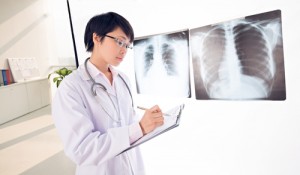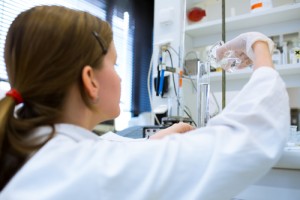Pulmonary Hypertension & Pulmonary Arterial Hypertension: Categories, Risk Factors And Treatments Profiled

Pulmonary hypertension (PH) and pulmonary arterial hypertension (PAH) are not popular topics of media coverage and popular conversation in the way that cancer and heart disease are. Despite increasing numbers of people diagnosed with PH/PAH worldwide, pulmonary hypertension has been a historically neglected disease. Which is a bit puzzling, since PH/PAH symptoms can be debilitating, initially including shortness of breath and fatigue, but if left untreated, they can lead to right ventricular failure, volume overload, and death. PAH has a high mortality rate, with 60 to 80 percent of patients dying within five years of diagnosis. However, because the molecular processes associated with the disease are difficult to define simply, understanding PH therefore remains enigmatic to most laypeople.
The Pulmonary Hypertension Association (PHA) defines the disease as high blood pressure in the lungs. As opposed to regular hypertension (also popularly referred to as “high blood pressure”) in which arteries throughout the body are constricted, pulmonary hypertension (PH) affects only the blood vessels in the lungs and the right side of the heart. The condition worsens over time and becomes life-threatening when the pressure in the pulmonary arteries rises high enough to put a strain on the heart.
Types of Pulmonary Hypertension
There are two basic classifications of the disorder. Pulmonary hypertension (PH) is a general term used to describe high blood pressure in the lungs from any cause, while pulmonary arterial hypertension (PAH) is a chronic and currently incurable disease that causes arterial walls in the lungs to tighten and stiffen. In persons with PAH, the right side of the heart is required to work harder in order to pump blood through narrowed arteries in the lungs. Eventually, the extra stress causes the heart to enlarge and become less flexible, compromising its ability to push blood out of the heart, through the lungs, and into the rest of the body. Unfortunately, diagnosis of PAH is frequently delayed due to the nonspecific nature of symptoms.
PAH has been estimated to affect 15 to 20 thousand people in the United States, predominantly middle-aged women. Available treatments for PAH can provide symptomatic improvement, primarily by relieving vasoconstriction (e.g., by inhibiting signaling in the endothelin-1 pathway), but they do not directly suppress inflammation or proliferation pathways and the disease continues to progress. Consequently, there is a very high unmet clinical need for new therapy.
 In a perspective paper published in the journal Cell Metabolism, entitled “The Metabolic Basis of Pulmonary Arterial Hypertension” (Cell Metab. 2014 Apr 1;19(4):558-73. doi: 10.1016/j.cmet.2014.01.004. Epub 2014 Feb 60), Dr. Gopinath Sutendra and Professor of Medicine Evangelos D. Michelakis of the University of Alberta Department of Medicine in Edmonton, Canada, note that while until recently it was thought that PAH pathology is restricted to pulmonary arteries, it is now known that several extrapulmonary organs are affected as well. Drs. Sutendra and Michelakis observe that the definition of PAH and the spectrum of associated conditions has been changing in part because of improved ability to diagnose it earlier and more accurately. Although its exact incidence and prevalence remain unknown in the modern era, PAH appears to be more prevalent than previously thought. However, they note that because of its high mortality, the relatively young age of affected patients, and the very high cost of available therapies, this disease has a significant impact on society.
In a perspective paper published in the journal Cell Metabolism, entitled “The Metabolic Basis of Pulmonary Arterial Hypertension” (Cell Metab. 2014 Apr 1;19(4):558-73. doi: 10.1016/j.cmet.2014.01.004. Epub 2014 Feb 60), Dr. Gopinath Sutendra and Professor of Medicine Evangelos D. Michelakis of the University of Alberta Department of Medicine in Edmonton, Canada, note that while until recently it was thought that PAH pathology is restricted to pulmonary arteries, it is now known that several extrapulmonary organs are affected as well. Drs. Sutendra and Michelakis observe that the definition of PAH and the spectrum of associated conditions has been changing in part because of improved ability to diagnose it earlier and more accurately. Although its exact incidence and prevalence remain unknown in the modern era, PAH appears to be more prevalent than previously thought. However, they note that because of its high mortality, the relatively young age of affected patients, and the very high cost of available therapies, this disease has a significant impact on society.
The World Health Organization (WHO) has recently expanded pulmonary hypertension classifications into five categories, in all of which average pressure in the pulmonary arteries is 25 mmHg or higher, compared with pressure in normal pulmonary arteries of 8–20 mmHg at rest. THe WHO’s five PH categories are:
Group 1, Pulmonary Arterial Hypertension (PAH): This group includes disorders in which pulmonary hypertension is associated with abnormalities in the small branches of the pulmonary artery, the arterioles. Several types of pulmonary hypertension are in Group 1, including idiopathic pulmonary arterial hypertension (IPAH – cause unknown, with neither a family history of PAH nor an identified risk factor ) pulmonary hypertension, pulmonary hypertension due to certain types of infection including HIV, connective tissue disorders, and some types of congenital heart disease, conditions that affect the veins and small blood vessels of the lungs, liver disease, or Sickle Cell disease. The pulmonary arterial hypertension category also includes PAH that’s inherited — i.e.: passed from parents to children through genes). It’s estimated that heritable PAH (HPAH) accounts for at least 6% of PAH incidence, and mutations in the bone morphogenetic protein receptor 2 (BMPR2) have been identified in the majority of cases. PAH can also be caused by drugs or toxins, such as street drugs and certain diet products, or by the parasitic infection Schistosomiasis which is one of the most common causes of PAH in many parts of the world.
Group 2: This group includes pulmonary hypertension caused by left-sided heart disease, such as cardiomyopathy, diastolic dysfunction, mitral stenosis, mitral regurgitation, aortic stenosis, and aortic regurgitation. Left side heart disease is thought to be likely the most common cause of PH.
Group 3: This group includes pulmonary hypertension due to lung problems, especially sleep-related breathing disorders, such as sleep apnea, chronic obstructive pulmonary disease (COPD), interstitial lung disease (ILD), other pulmonary diseases with mixed restrictive and obstructive pattern, alveolar hypoventilation disorders, chronic exposure to high altitude, and developmental abnormalities.
Group 4: This group includes pulmonary hypertension due to pulmonary embolus (blood clots that travel to the lungs) or Chronic thromboembolic pulmonary hypertension (CTEPH) — a form of pulmonary hypertension caused by old blood clots in the lungs (pulmonary embolism).
Group 5: This group includes pulmonary hypertension due to other miscellaneous causes, which do not fit into the other four categories, some examples being blood disorders such as polycythemia vera and essential thrombocythemia; Systemic disorders, such as sarcoidosis, pulmonary Langerhans cell histiocytosis, lymphangioleiomyomatosis, neurofibromatosis, and vasculitis that may involve many of the body’s organs; metabolic disorders, such as thyroid disease and glycogen storage disease (in which the body’s cells don’t use a form of glucose (sugar) properly) and Gaucher disease; hematological disorders: myeloproliferative disorders, splenectomy and other conditions, such as tumors that press on the pulmonary arteries, fibrosing mediastinitis, and chronic renal failure on dialysis. PAH is also a rare side effect of certain anorexigenic agents, such as fenfluramine.1,4. However, the incidence of drug-induced PAH related to fenfluramine is decreasing and will eventually cease to be an issue, as these agents are no longer available.
[adrotate group=”4″]
The National Institutes of Health (NIH)’s National Heart, Lung, and Blood Institute says the exact number of people who have pulmonary hypertension (PH) isn’t known, but that cases of idiopathic PAH (no known cause) are rare — estimated to be about 15 cases per 1 million adults. pulmonary arterial hypertension affects women more often than men, and people who have group 1 PAH tend to be overweight. PH usually develops between the ages of 20 and 60, but it can occur at any age.
 Signs And Symptoms
Signs And Symptoms
Signs and symptoms of pulmonary hypertension (PH) may include:
- Shortness of breath during routine activity, such as climbing two flights of stairs
- Tiredness
- Chest pain
- A racing heartbeat
- Pain on the upper right side of the abdomen
- Decreased appetite
As PH worsens, persons afflicted may find it hard to do any physical activities, at which point other signs and symptoms may include:
- Feeling light-headed, especially during physical activity
- Fainting at times
- Swelling in legs and ankles
- A bluish color on lips and skin
Treating Pulmonary Hypertension
Pulmonary hypertension (PH) has no cure, but there are treatments that may help relieve symptoms and slow the progress of the disease. The choice of treatment will depend on the type of PH and its severity.
“Treatment of PAH has become a challenging field to keep abreast of due to the increasing number of medications and the large volume of data provided by the clinical studies responsible for their approval. The newly updated CHEST guidelines provide the clinician with a comprehensive approach to the medical management of adult patients with PAH,” says James R. Klinger, MD, FCCP, Professor of Medicine, Brown University, and topic editor for a new PAH guideline paper entitled “Pharmacological Therapy for Pulmonary Arterial Hypertension in Adults: CHEST Guideline” recently published in the The American College of Chest Physicians’ journal CHEST. The full free-access article is available in PDF format at: https://journal.publications.chestnet.org/article.aspx?articleid=1881654
Treatments for group 1 PAH include medicines and medical procedures to relax the blood vessels in the lungs and reduce excess cell growth in the blood vessels. As blood vessels relax, more blood can flow through them. While effective therapies are available for uncomplicated PAH, patients with scleroderma-associated group 1 PAH have a poorer response to these therapies compared with those with idiopathic PAH (IPAH). Some improvement in outcomes has been obtained, but early diagnosis and early institution of PAH-specific therapy are of paramount importance.
Examples of medicines for group 1 PAH include:
- Phosphodiesterase-5 inhibitors, such as sildenafil
- Prostanoids, such as epoprostenol
- Endothelin receptor antagonists, such as bosentan, ambrisentan and macitentan
- Calcium channel blockers, such as diltiazem
Approved treatments for PAH, including endothelin receptor antagonists, phosphodiesterase inhibitors, and prostanoids, relieve vasoconstriction but typically do not have direct effects on other aspects of the disease.
Medical and Surgical Procedures to address group 1 PAH include:
- Atrial septostomy, in which a thin, flexible tube called a catheter is put into a blood vessel in the patient’s leg and threaded up into the heart. The tube is then put through the wall (the septum) that separates the right and left atria (the upper chambers of the heart). A tiny balloon on the tip of the tube is inflated, creating an opening between the atria. This procedure relieves the pressure in the right atria and increases blood flow. Atrial septostomy, however, is rarely done in the United States.
- Lung transplants — surgery to replace a person’s diseased lung with a healthy lung from a deceased donor. This procedure may be used for people who have severe lung disease that’s causing PAH. In heart–lung transplants, both the heart and lung are replaced with healthy organs from a deceased donor.
Treatments for Group 2 Pulmonary Hypertension may include lifestyle changes, medicines, and surgery.
Persons with Group 3 Pulmonary Hypertension may need oxygen therapy to raise oxygen levels in the blood. Oxygen therapy can be done at home or in a hospital.
Persons with Group 4 PH will likely be prescribed blood-thinning medicines to prevent clots from forming or getting larger. In some cases, surgery is needed to remove scarring in the pulmonary arteries due to old blood clots. Bayer’s Adempas was approved in October 2013 to treat patients in this group as well.
Group 5 PH is treated by treating its variety of causes as appropriate.
There are also several treatments that may be used for all types of PH, including:
- Diuretics to help reduce fluid buildup in your body, including swelling in the ankles and feet.
- Blood-thinning medicines that help prevent blood clots from forming or getting larger.
- Digoxin helps the heart beat stronger and pump more blood, and is sometimes used to control the heart rate if abnormal heart rhythms, such as atrial fibrillation or atrial flutter, occur.
- Oxygen therapy, which as fore-noted raises the level of oxygen in your blood.
- Regular physical activity may help improve the patient’s ability to be active.
 Despite recent growth in therapeutic options, questions remain regarding pharmacological treatments. The Pharmacological Therapy for Pulmonary Arterial Hypertension in Adults: CHEST Guideline contains 79 recommendations and expert consensus statements to aid clinicians in the management of PAH using the latest drug therapies for adults with the condition. The complete Pharmacological Therapy for Pulmonary Arterial Hypertension in Adults: CHEST Guideline is available in the June 17, 2014, Online First edition of the journal CHEST: https://bit.ly/PAHguideline
Despite recent growth in therapeutic options, questions remain regarding pharmacological treatments. The Pharmacological Therapy for Pulmonary Arterial Hypertension in Adults: CHEST Guideline contains 79 recommendations and expert consensus statements to aid clinicians in the management of PAH using the latest drug therapies for adults with the condition. The complete Pharmacological Therapy for Pulmonary Arterial Hypertension in Adults: CHEST Guideline is available in the June 17, 2014, Online First edition of the journal CHEST: https://bit.ly/PAHguideline
“While these guidelines highlight the best options for treatment today, the process of creating these guidelines shines a light on the lack of sufficient evidence to support stronger recommendations. There are still considerable gaps in trials, research, and understanding the disease,” says Darren Taichman, MD, PhD, FCCP, Adjunct Associate Professor of Medicine, University of Pennsylvania and PAH guideline panel chair. “We hope the community of academic and industry-based researchers will choose carefully those studies that will answer the most important clinical questions so as to best use the limited but generous efforts of our patients, who risk their well-being as volunteer participants in clinical studies.”
Current PAH Clinical Trial: Antioxidant Inflammation Modulators (AIMs)
Irving, Texas-based biotech firm Reata Pharmaceuticals, Inc. recently announced that it enrolled its first patient in a new Phase 2 dose ranging study examining the safety, tolerability and efficacy of an experimental therapy called bardoxolone methyl for patients with pulmonary arterial hypertension (PAH). This new clinical trial is an effort by the company to develop a novel class of drugs that feature potent transcription-regulating activity, which are known as antioxidant inflammation modulators (AIMs). These AIMs activate the biological transcription factor Nrf2, which in turn promotes the production of various antioxidant, detoxification, and anti-inflammatory genes, all while inhibiting NF-B, a gene that regulates a myriad of pro-inflammatory proteins. Nrf2 regulates the body’s production of literally hundreds of anti oxidative and cytoprotective molecules, and is associated with protection against a wide range of different diseases that involve inflammation and oxidative stress. The idea behind the use of this AIM is to trigger the activation of Nrf2, which in turn promotes the production of many anti oxidative, detoxifying, and anti-inflammatory genes, which leads to the inhibition of NF-B, a gene that regulates many pro-inflammatory proteins. The pharmacology of AIMs mimics that of endogenous prostaglandin metabolites, which are responsible for the orchestrated resolution of inflammation. The anti-inflammatory, cytoprotective and, according to Reata, energy metabolism effects of AIM pharmacology have been documented in more than 250 scientific papers and are potentially relevant to a wide range of diseases.
[adrotate group=”3″]
Reata notes that molecular and pharmacological effects of bardoxolone methyl are broad through its induction of Nrf2 and suppression of NF-B, explaining that Bardoxolone methyl may therefore address multiple facets of the pathophysiology of PAH because it suppresses activation of proinflammatory mediators, enhances endothelial NO bioavailability, improves metabolic dysfunction, suppresses vascular proliferation, and prevents maladaptive remodelling. Furthermore, while existing therapies primarily target only smooth muscle cells, bardoxolone methyl targets multiple cell types relevant to PAH, including endothelial cells, smooth muscle cells, and macrophages.
One of the primary effects of Nrf2 activation is reduced production of reactive oxygen and nitrogen species (ROS/RNS) such as superoxide, hydrogen peroxide, and peroxynitrite. A number of medicinal natural products, including oleanolic acid (the source material for AIMs), resveratrol and curcumin, also have modest Nrf2-activating properties, but AIMs are by far the most potent known activators of Nrf2. AIMs also inhibit the activity of the major pro-inflammatory transcription factor NF-kB, both directly (by inhibiting IKK, the kinase that activates NF-kB) and indirectly (by inhibiting ROS/RNS-mediated signaling pathways that promote NF-kB activity)3,4. This pharmacology mimics that of endogenous prostaglandin metabolites (e.g., 15-deoxy prostaglandin J2) that are responsible for the orchestrated resolution of inflammation.
Sources:
World Health Organization
Pulmonary Hypertension Association
National Heart, Lung, and Blood Institute
The U.S. National Library of Medicine (NLM)
PAH-info.com
The American College of Chest Physicians
CHEST (journal)
Reata Pharmaceuticals, Inc.







